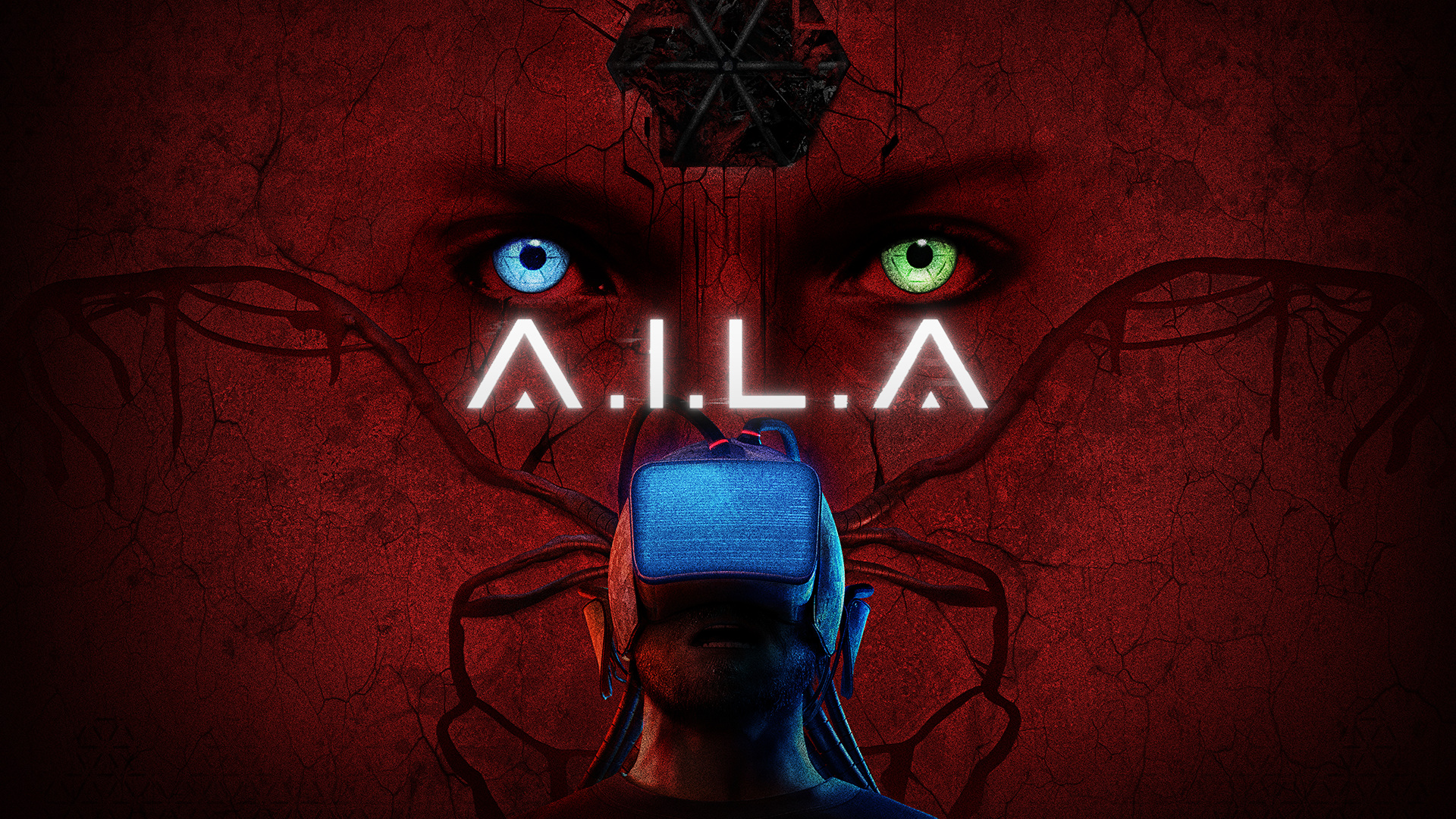About halfway through my playtime of A.I.L.A, I was reminded of In Sound Mind, and I battled with breaking free of the comparison for the rest of the story. Both share a similar structure of smaller stories (here it’s experiences), intertwining with a larger narrative whole. Both focus on moral decision-making and exploration of ethically grey choices. Both also share some janky survival horror combat and mechanics.
Though they shared a number of similarities, A.I.L.A takes a significant fork in the road in that I left feeling much more satisfied.
I think this is due to the opening premise and first half of the game being far more interesting than In Sound Mind’s, with a breadcrumb trail of delectable narrative threads that build a real sense of mystery of suspense. But, the question is never how the story opens, but how it manages to bring it all together into a cohesive conclusion. Does A.I.L.A nail the landing or overcook its own motherboard along the way?
(AI)LA (AI)LA Land
A.I.L.A is set in a near-future dystopia, defined by the usual neon billboards, sleek-yet-clinical interior spaces and more technology than a Skynet parade. Assuming the role of a play-tester named Samuel, we’re given the task of quality assessing a megacorporation’s new A.I toy – A.I.L.A. In what feels strikingly too close to the current A.I climate, it’s basically ChatGPT, but using brain manipulation for the benefit of more immersive survival horror. Cue that horror turning into T-1000s shooting laser rifles at you. Proper “immersion” that will be.
What ensues is a fairly lengthy story (I clocked in at 9 hours), that takes place in various “experiences” A.I.L.A has planned for you, interspersed with real-life sequences in Samuel’s flat. The former is the basis for typical survival and psychological horror motifs, while the latter provides more insight into Samuel himself, his background and the state of the near-future current affairs.
As I mentioned in the introduction, the first 4-5 hours are A.I.L.A’s best on the narrative front. Discovering more about the repressive world Samuel inhabits, attempting to understand A.I.L.A’s avatar and their intentions, seeking hints of the wider themes within the experiences is all engrossing. Samuel is fairly well voiced, as is the presentation of A.I.L.A, with constant drips of something left unsaid. There is some unfortunate audio desync that occurs which undercuts the delivery, but on the whole, the first half of the story sets up a fantastic mystery.
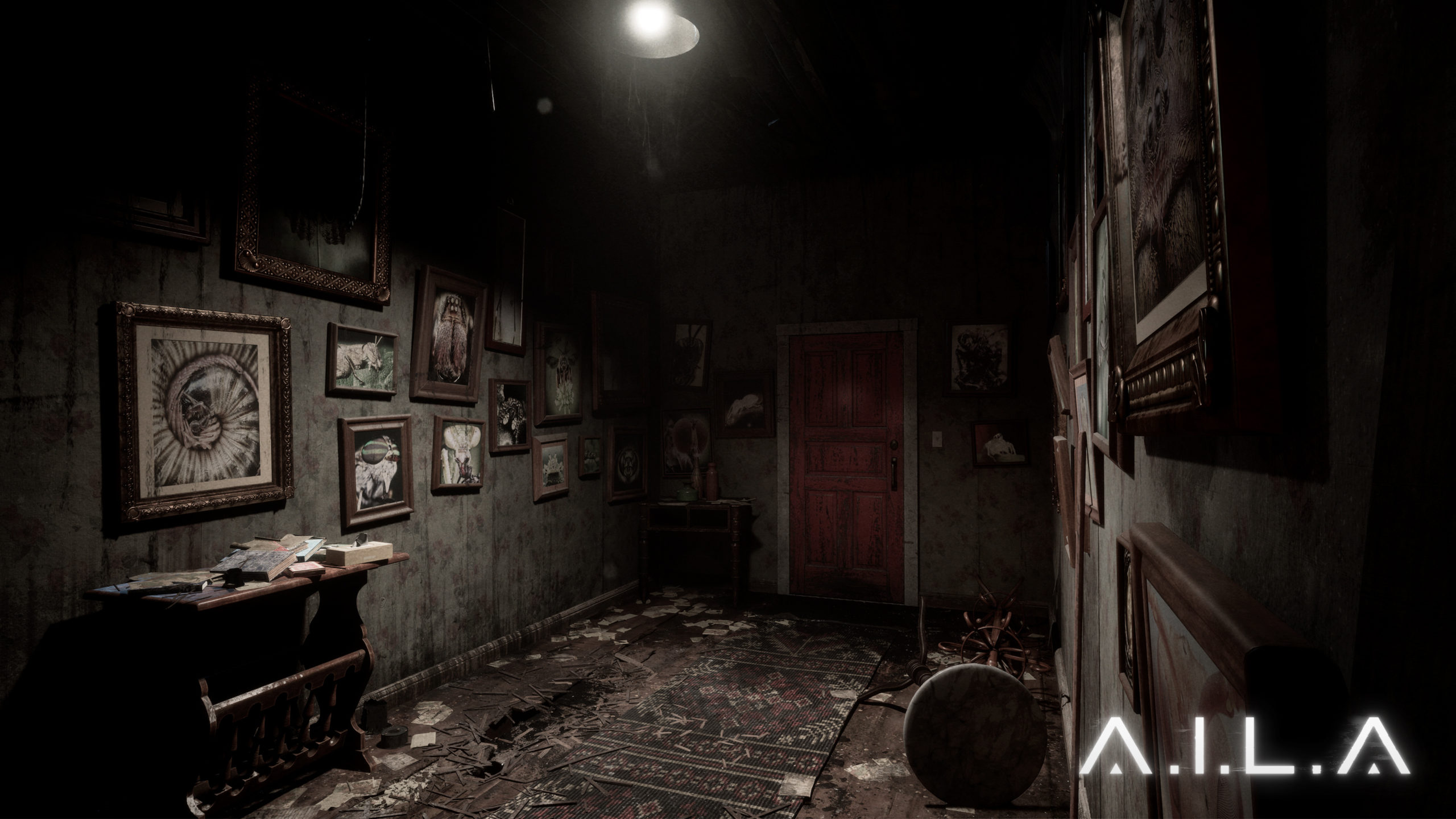
A.I Don’t Care, I Love It
In the second half, A.I.L.A sadly doesn’t stick the landing on its most intriguing beats. Without spoiling anything, it devolves into more tried-and-tested, weary psychological horror notes you’ve probably seen in any other horror media a hundred times. That’s not to say that it’s bad or poorly delivered (quite the opposite), but I came away from my ending more dissatisfied than fulfilled. The threads that most intrigued me are dropped almost entirely, and it left somewhat of an aftertaste best described as “meh”.
Having said that, there are multiple endings depending on your choices throughout the experiences. Who to spare or kill, whether to arm yourself or remain vulnerable, choose to play along with a game or feign ignorance. The choices themselves sit in that ideal grey area between righteousness and flexibility, and I imagine there will be some quite different philosophical takes for a couple of them. Normally, I’d be pre-disposed to spare everyone or choose the “good” option, but it’s not so clear-cut in A.I.L.A, which I liked.
So, while the finale didn’t quite hit for me, the first half of the game’s narrative is superb. The decision-making remains thought provoking throughout, and the characters are developed well enough to make proceedings believable. More hits than misses overall, but the one miss is an open-goal, on the line, blaze it over the bar for the win, kind of miss.
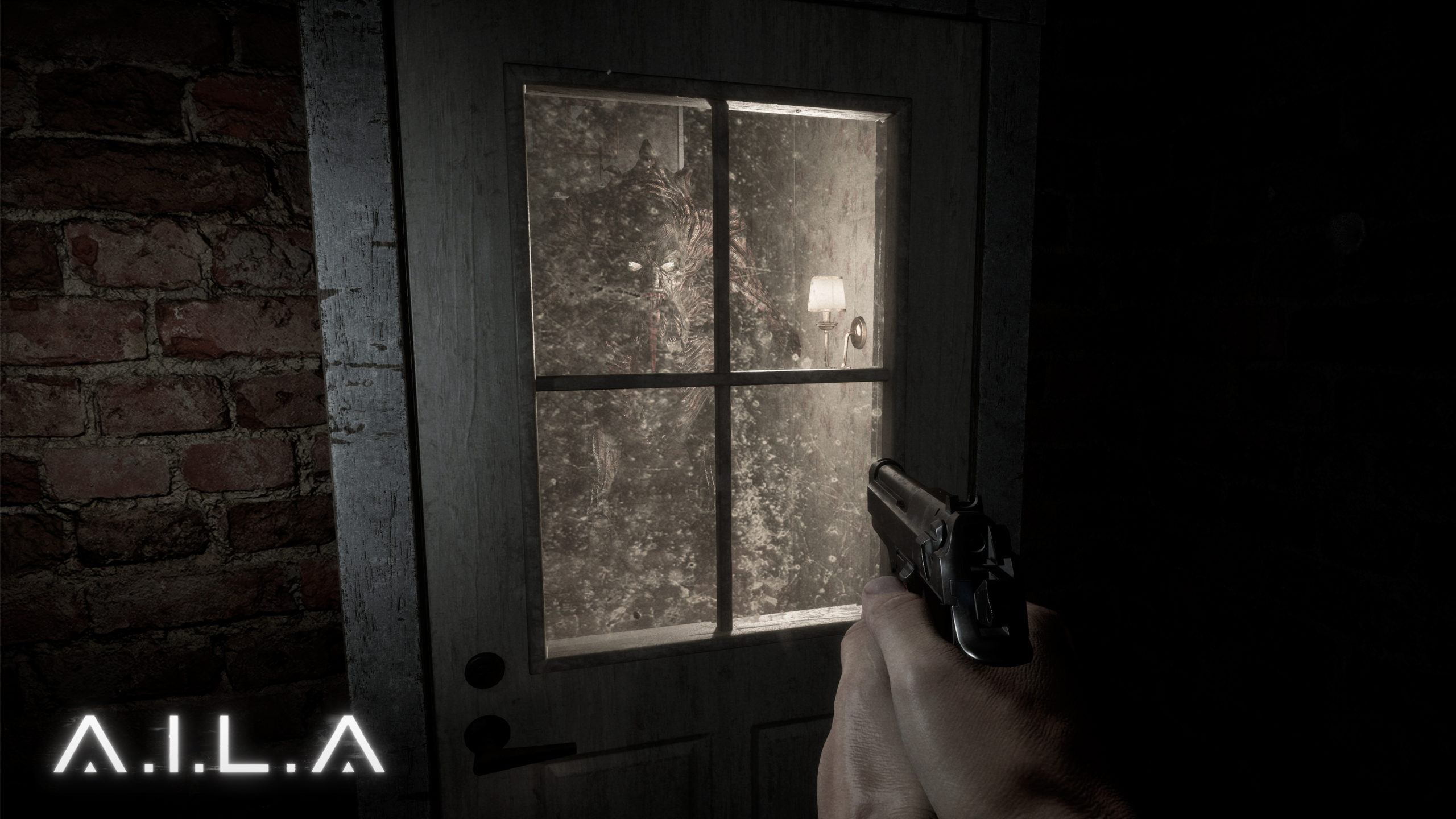
A.I Lad, We’re Hunting For Monsters
When you’re in control of Samuel himself, A.I.L.A is effectively a walking simulator, as you potter around his flat. You’ll collect packages, install equipment, feed the cat and interact with inspectable objects. All very fine. Once you don the A.I.L.A headset and jump into the real meat of the game however, you’ll be met with a real pick-and-mix of different styles of horror gameplay. All of them fit into a unified vision, but take quite different approaches.
The Impossible House and Woman on the Road for example, channel Resident Evil 7 energies – focus on claustrophobic and atmospheric houses with shifting reality or other-worldly threats. The Medieval iteration however, is much more combat heavy, steeped within ye’ old knights lore and an RE4 village aesthetic. In fact, almost all of the experiences reference the giants of survival horror in some way, with direct jokes to “Residence of Evil” and an ID card for “Leon S Michael”.
Variety is clearly the aim here, and it works. Each experience has its own weapons, enemy types and environmental puzzles that feel unique to the genre of horror its inspired by. Though, after the Medieval one, things do take a turn for the repetitive, with Ghost Ship relying on a navigation mechanic and The Forest also being very combat heavy. Despite the attempt to keep things fresh, A.I.L.A always sticks to the more action orientated versions of the genre, rather than really committing to say, an Outlast or Luto.
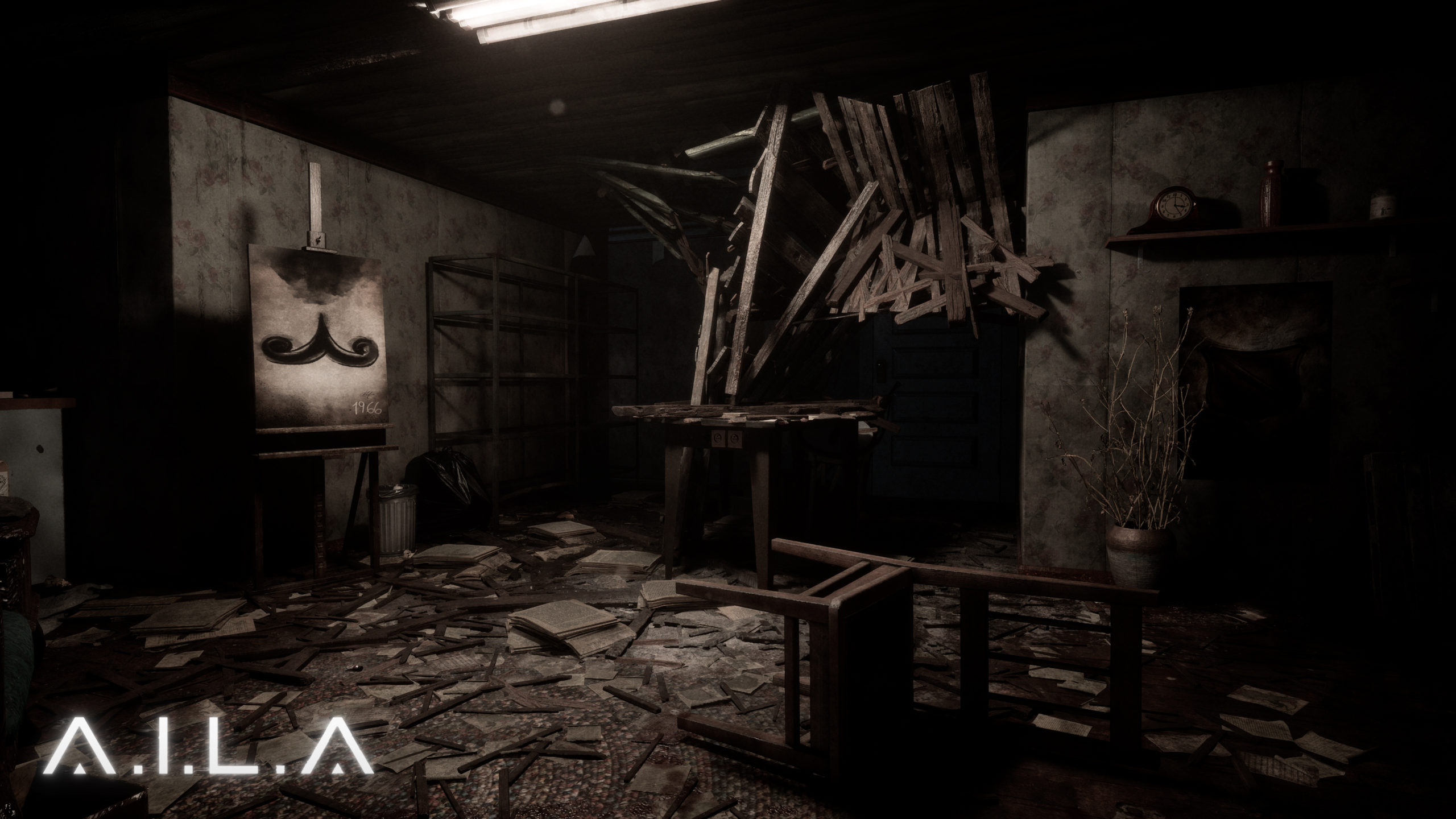
Artificial Intelligence, Indeed
In most experiences, you’ll be needing to fell some version of foe, be it undead knights, undead pirates or undead tree-human hybrids. So much undead. To that end, you’ll acquire melee (axe, sword, hammer) and ranged weapons (rifles, crossbows, handguns). Combat is okay, with shots having some weight and impact, but still having a slight airiness that feels unsatisfying when blasting a shotgun, for example.
Melee combat suffers a bit more, where holding L2 to block can cause the animation to freeze and me being stuck blocking despite letting go of the input. Certain smaller enemies are a colossal pain in the rectum to aim for, owing to their fast movement and Samuel’s glacial pace of aiming. There has been some good balancing work to make you consider your shots and conserve ammo, but it never goes beyond decent as a combat experience.
Bosses in particular are not good. While you have ranged weapons, they often take far too long to reload (looking at you, flintlock and crossbow). Instead, my best option was just to whip out a melee weapon, block until the attack ended, swing 3-4 times, rinse-repeat until big foe went down. This method works for every boss bar the last one, simply because you can’t block with ranged weapons. It saps any climactic energy from the fights, and the enemy AI for both bosses and regular grunts is fairly basic.

A.I.L.A-ke Big Pixels and I Cannot Lie
Puzzle-wise, A.I.L.A stands in a similar vein to other survival or psychological horror imitators. There’s the occasional head-scratcher, but most are straightforward enough to catch onto pretty intuitively. It strikes a really good balance, for me anyway, and I never felt overly frustrated by an obtuse roadblock. Plus, the key-finding to unlock doors gameplay just always works for the genre, and it’s no different here.
From a technical standpoint, A.I.L.A is quite gorgeous, even at low-medium settings. On high, the glow of animatronics is wonderful, while the burnt-out carcass of the Medieval village is littered with detail and shadow effects. All of the experiences have distinct themes and visual patterns, making it a joy throughout the entire runtime to take these worlds in. Lighting is often fantastic, with incredibly deep shadows giving way to luminescent sunlight.
All of this, however, comes at quite the cost. While A.I.L.A never crashed on me, it had persistent framerate drops, sometimes into single-digits. I had to drop to low settings for the Medieval experience just so it would even work. Dialogue sequences suffered frequent audio desync and lag, while fallen enemy bodies would often ragdoll off into the atmosphere in a comical display of firework imitation. My rig certainly isn’t top of the line, but it can run more demanding games than this in a superior fashion, so there are some issues to iron out. I also found a garden chair hovering amongst a battlefield of fallen knights, which was highly amusing.
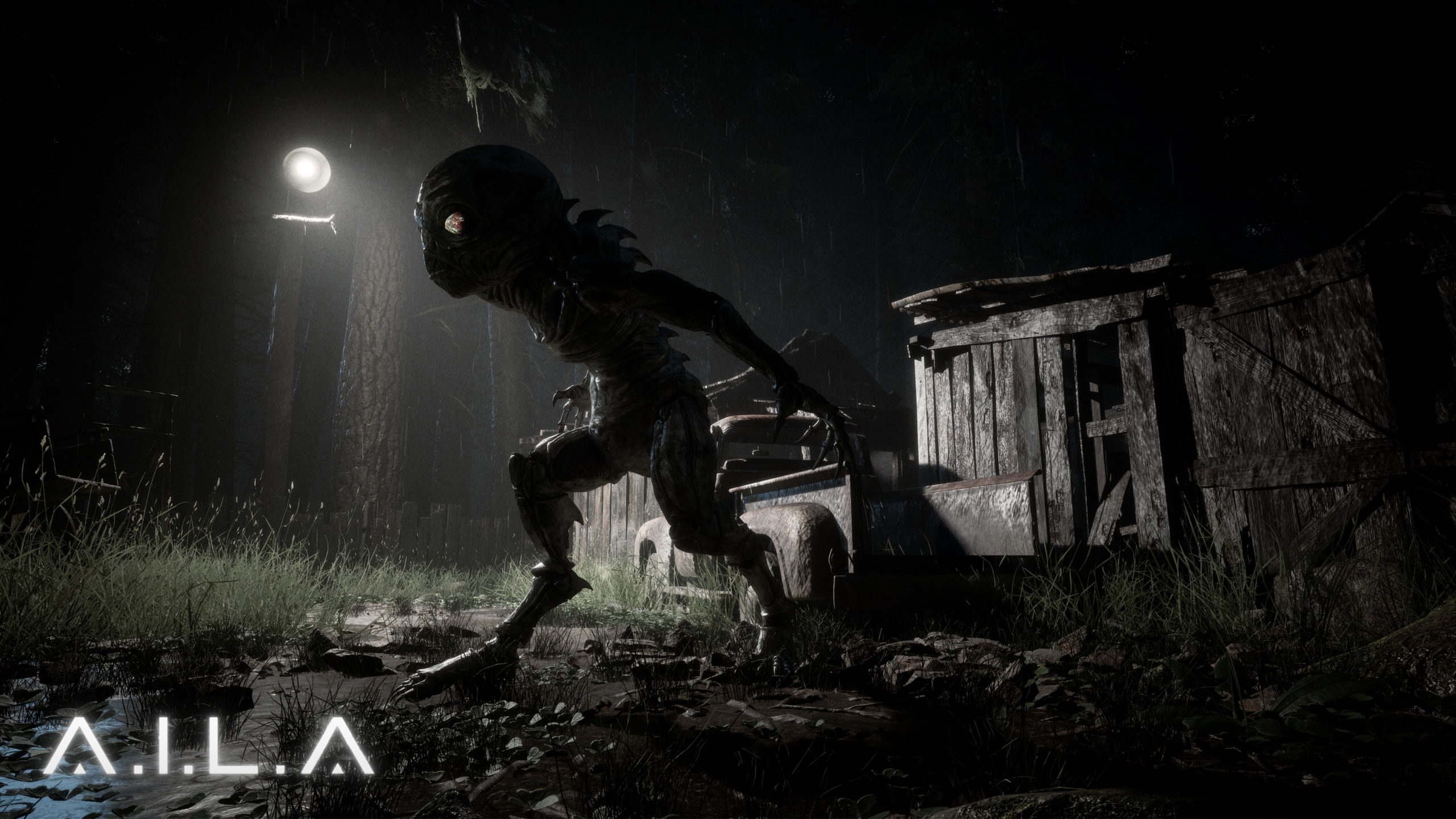
A.I.L.A 1.0, Ready To Deploy
In spite of the not insignificant issues though, I had a really good time with A.I.L.A. I do wish it had lent into the more atmospheric horror aspect more, as the scares often feel like somewhat of an afterthought (and just aren’t all that scary, to be frank). It takes a shotgun-like approach to imitating all manner of previous survival horror classics, and largely does it well, bar the odd ricocheting bullet crashing into its own foot.
It won’t be challenging the giants of the genre by any means, but its one of the better efforts compared to many of its contemporaries, and will do more than just kill some time for horror fans. There wasn’t enough here to make me want to replay it, but I am intrigued to check out the other possible endings and see if any discourse materialises over the decisions, which is always a decent sign. Plus, it’s nine hours long for a first playthrough, which is substantial for a game of this size and budget.
If nothing else, A.I.L.A demonstrates yet again the potential pitfalls and dangers of A.I deployment on such a broad scale, which is incredibly fitting given the current landscape surrounding its intrusion into real life.
A.I.L.A is available November 25th on PC (review platform), Xbox Series X|S and PlayStation 5.
Developer: Pulsatrix Studios
Publisher: Fireshine Games
Disclaimer: In order to complete this review, we were provided with a promotional copy of the game. For our full review policy, please go here.
If you enjoyed this article or any more of our content, please consider our Patreon.
Make sure to follow Finger Guns on our social channels –Twitter, Facebook, Twitch, Spotify or Apple Podcasts – to keep up to date on our news, reviews and features.
